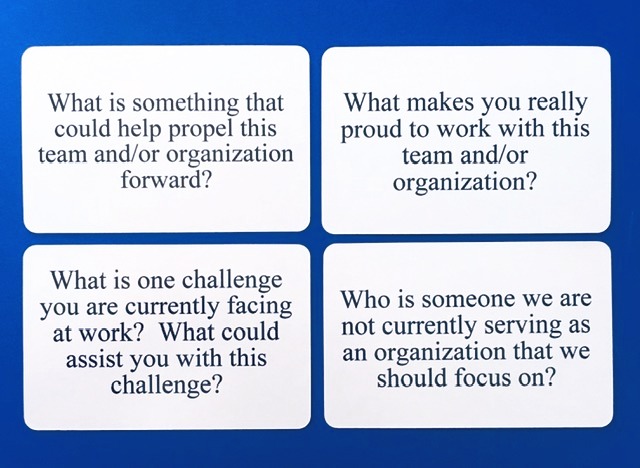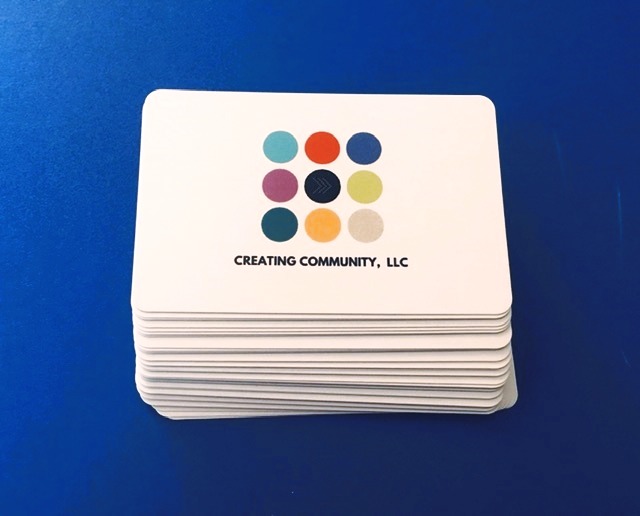TEAM TALK: Create Belongingness With An Approachable Leadership Style
- Annie Frisoli

- Jan 28, 2022
- 3 min read
I have been lucky to work with GREAT teams across the U.S. over the past couple of months. Every time I complete a day retreat with a team, there is always one theme that stands out to me - humans desire belongness (even the tough employee who comes into the retreat with their arms crossed) - and when prompted in authentic and purposeful ways, people want to connect.
Thus, I am a big advocate on fostering a sense of belongingness at work. AND it’s needed, because according to the Harvard Business Review, 40% of people feel isolated at work.
That leaves a lot of room for improvement for all organizations, especially when you consider that employees who feel they don’t belong are less happy and may be less motivated and productive than those who feel at ease in their workplace.
Thus one of your biggest challenges and opportunities is finding ways to foster belongingness amongst your team. For some leaders, this probably feels like a catch-22. After all, your team members may hesitate to open up around you simply due to your title. The “boss” can be a bit intimidating!
How can you let people know their opinions matter when they aren’t willing to share their opinions with you? How can you let your team know you’re approachable and open to hearing new ideas?
As a leader, it’s your job to make this happen. Here are some tips to open the lines of communication so your team feels more welcome in the workplace.
1. Set aside time during each meeting for people to connect
Time may be of the essence, but time spent making people comfortable gives back in the form of happier employees and more cohesive and productive teams.
Allow five minutes at the beginning or end of each meeting for fostering connection. You can even break up your meetings and professional development to let people check in with those around them using conversation starters like the Team Talk cards I have designed based off of the conversations I hear teams have during retreats (these are NOT “icebreaker” style questions, rather they are 52 questions to open up WORK conversations).
2. Be intentional with body language
The busier we are, the more closed-off our body language becomes. When you have an emergency issue to deal with, you don’t have time for distractions. In these kinds of situations, closed-off body language is appropriate.
However, the more we rush from place to place or from problem to problem, the more our body starts to develop postures that signal to others we’re too busy for them. This can look like your arms crossed in front of your body, your eyes on your phone while you walk, or speed walking through the halls.
Drop your arms, slow your speed, and make eye contact with the people around you. You’ll be amazed at the difference in how people approach you.
3. Build time into your schedule for getting to know people
Check-in with employees just for the sake of checking in. Ask them questions about their lives, and also how work is going.
While the people you work with may feel too intimidated to come to you with problems and concerns, it’s a different story when you go directly to them and ask them how everything is going. They realize that you’re there for them and that you care about how they’re doing.
Even if they have no concerns at the moment, these check-ins will give many people the confidence they need to go to you later on when issues do arise.
But don’t just ask about work. Find out about their family, hobbies, pets, and whatever else makes them tick. People are more confident letting you know when something is going on outside of work that may be a distraction when you’ve built a foundation of trust.
You Can’t Lead… Without a Team
If your employees feel as if they don’t belong, you don’t really have a team at all—just a collection of employees waiting to go home.
You must go out of your way to let your team know you’re approachable and you want to hear their ideas. You also must put in the effort to get your team talking to each other and expressing their concerns and feelings and lifting each other up.
And I want you to know you belong here, too, and I’m always open to feedback. Please feel to share what else you would like for me to write about in future blogs in the comments!










Comments